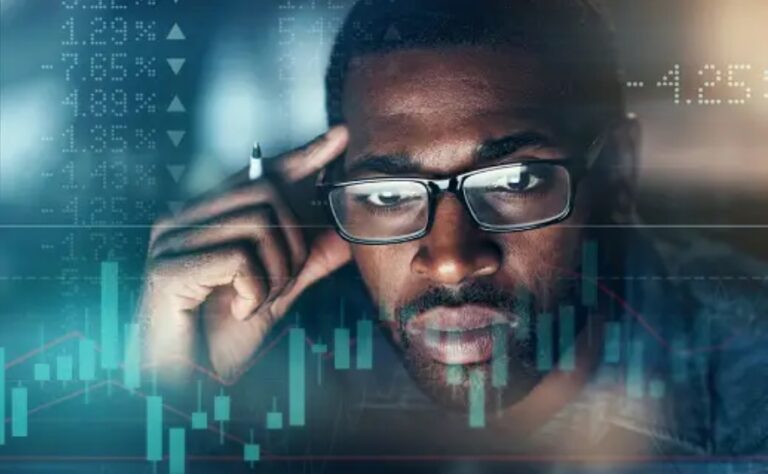
Trailing Stop Lag can hinder your trading success in Forex. Learn how to manage it effectively to maximize your profits.
Forex trading can feel like a roller coaster ride. One moment you are making profits, and the next, everything changes. One common issue traders face is known as “Trailing Stop Lag.” This problem can cost you money if not managed properly. Understanding it is crucial for both beginners and seasoned traders.
Many traders struggle with Trailing Stop Lag because it can be confusing. They may not understand how it affects their trades or how to fix it. This can lead to missed opportunities and losses. Learning about Trailing Stop Lag is essential to improve your trading game and protect your investments.
The fibonacci indicator is one tool that can help you with your trading strategies. It assists in identifying potential price levels where the market may reverse.
Understanding the Problem
Trailing Stop Lag is when a trader’s trailing stop order does not move as quickly as the market price. This can result in premature exits from trades or missing out on larger profits. It occurs due to delays in execution, market volatility, or the settings used for the trailing stop.
For example, imagine you set a trailing stop for a long position on EUR/USD. The price moves up quickly, but your trailing stop lags behind due to high volatility. Instead of securing your profits, the price suddenly drops, and you exit with a loss. This can be frustrating, especially when you expected to gain more from the trade.
Solutions for Trailing Stop Lag
Now that we understand the problem, let’s explore solutions to mitigate Trailing Stop Lag. Here are some effective strategies:
1. Adjust Your Settings
Check the distance of your trailing stop. If it’s too far from the market price, it may lag behind. Consider tightening your stop to follow the price more closely.
2. Use Limit Orders
Instead of relying solely on trailing stops, use limit orders. They can help you lock in profits at specific price levels, reducing the impact of lag.
3. Monitor Market Conditions
Be aware of the market’s volatility. In highly volatile conditions, Trailing Stop Lag can be more pronounced. Adjust your strategy accordingly.
4. Utilize Advanced Trading Platforms
Some trading platforms offer advanced features for trailing stops. Research and choose a platform that suits your needs for better execution speed.
5. Keep Learning
Stay updated on trading strategies and tools. Continuous learning can help you improve your skills and avoid common pitfalls like Trailing Stop Lag.
For more insights, check the GBPUSD analysis on April 08, 2025. It can provide you with valuable information on current market trends.
Frequently Asked Questions
- How do I detect this issue in real-time?
You can monitor your trades closely. Use alerts to notify you when the market moves significantly. This allows you to react quickly and adjust your trailing stop accordingly. - Can brokers legally do this?
Brokers are required to execute orders based on the market. However, delays can occur due to high volatility or technical issues. Understanding your broker’s policies is essential. - What tools can I use to prevent this?
Consider using automated trading tools. They can help you manage trailing stops more effectively and reduce human error. - Is this problem more common in specific market conditions?
Yes, Trailing Stop Lag is more common during high volatility periods. It’s essential to adjust your trading strategy accordingly to avoid this issue.
Conclusion
Tackling Trailing Stop Lag is vital for successful Forex trading. By understanding the issue and applying effective solutions, you can enhance your trading experience. Stay informed and keep refining your strategies to manage and avoid this problem.
Trading can be challenging, but with the right knowledge, you can master it. Keep learning and stay focused on your goals!
Recommended Next Steps
To better manage Trailing Stop Lag, consider these next steps:
- Review your current trading strategy.
- Experiment with different trailing stop settings.
- Stay updated on market trends and conditions.
- Utilize educational resources to enhance your skills.
- Join trading forums or groups for support and insights.
Trailing Stop Lag can significantly impact your Forex trading success. Understanding and addressing it will help you navigate the market more effectively.
This guide walks you through some key strategies traders rely on Zacks, Investing.com
Expand Your Knowledge
- 📌 Forex Trading Learning Road Map
- 📌 Forex Trading Course with no Fees
- 📌 Forex Trading Issues, Problems, and Solutions
- 📌 Forex Daily Forecast & Live Updates
- 📌 Forex Fundamental & News Analysis: Tomorrow’s Market Movers & Trade Opportunities
- 📌 Forex Education Hub: Learn & Profit
- 📌 Forex Technical Analysis, Indicators & EA’s
Start Trading Today
Ready to take your forex trading to the next level? Open an account with Exness, one of the most trusted platforms in the industry. 👉 Sign Up Now and trade with confidence!
My recommended broker stands out with ultra-low spreads for beginners, instant withdrawals, and zero spread accounts for pro traders.
Trusted since 2008, lightning-fast execution, no hidden fees, and a secure, transparent trading environment—giving you the edge you need to succeed. 🚀
Watch this helpful video to better understand Trailing Stop Lag:
Note: The video above is embedded from YouTube and is the property of its original creator. We do not own or take responsibility for the content or opinions expressed in the video.
The video focuses on Forex trading, which involves buying and selling currencies on the foreign exchange market with the aim of making a profit. It emphasizes the importance of understanding market trends, analyzing currency pairs, and using various trading strategies to maximize potential gains. The speaker outlines key concepts such as pips (the smallest price movement in a currency pair), leverage (borrowing funds to increase trading potential), and risk management (strategies to minimize potential losses). The speaker also discusses the significance of keeping emotions in check, as trading can be stressful, and emotional decisions can lead to poor outcomes.
Additionally, the video highlights the resources available for traders, including trading platforms, educational materials, and community forums where traders can share insights and strategies. New traders are encouraged to practice on demo accounts before trading with real money, allowing them to learn the mechanics of trading without financial risk. The speaker also advises maintaining a trading journal to track progress and refine strategies over time. Overall, the video serves as an introduction to Forex trading, emphasizing the need for education, preparation, and a strategic approach to succeed in this dynamic market.
For those interested in starting their journey, understanding the basics is crucial. Forex trading for beginners typically involves learning how the currency market operates, what factors influence currency prices, and how to analyze market data. New traders should familiarize themselves with key terms and concepts, as well as trading strategies that can help reduce risks. Engaging in educational resources and practicing trading strategies can provide a solid foundation for future success in Forex trading.




